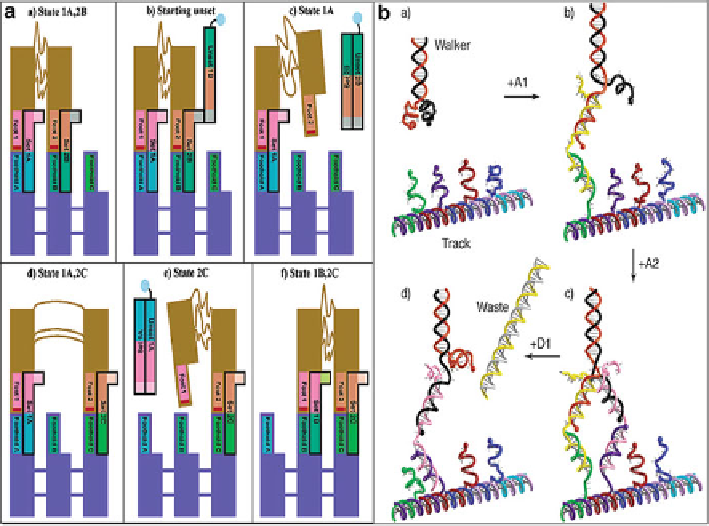Biomedical Engineering Reference
In-Depth Information
classified as DNA strands or other fuels controlled movement. The representatives
in former style are DNA scissors [
7
], DNA gear [
8
], PX-JX2 transition [
9
-
13
], DNA
walking devices based on DNA tiles [
14
-
19
], the small triangle [
20
] or spider's [
21
]
walking on DNA origami, et al., while the representatives in latter style are B-Z
DNA transition controlled by Co(NH
3
)
6
3C
[
22
], G4 structures controlled by K
C
[
23
], i-motif structures controlled by pH [
24
], and so on. Between them, the most
fabulous design was the walking device, which was called “DNA walker” here.
12.2
DNA Walking Devices in Solution
Generally, a DNA walker contains a track and a walking body, which could
couple and uncouple partly or entirely according to the design. The first DNA
walker (Fig.
12.1
a) was made by Seeman and coworkers in 2004, which was
inspired by the precise controlling of airplane in macroscopic world [
14
]. It was a
bipedal DNA walker that locomoted in an inchworm fashion, with one foot always
trailing the other. Input DNA strands act as a convenient interface to allow precise
Fig. 12.1
(
a
) Seeman's bipedal DNA walker that locomoted in an inchworm fashion (Reprinted
with the permission from Ref [
14
]. Copyright 2004 American Chemical Society). (
b
) Pierce's
processive bipedal DNA nanomotor (Reprinted with the permission from Ref [
15
]. Copyright 2004
American Chemical Society)

Search WWH ::

Custom Search